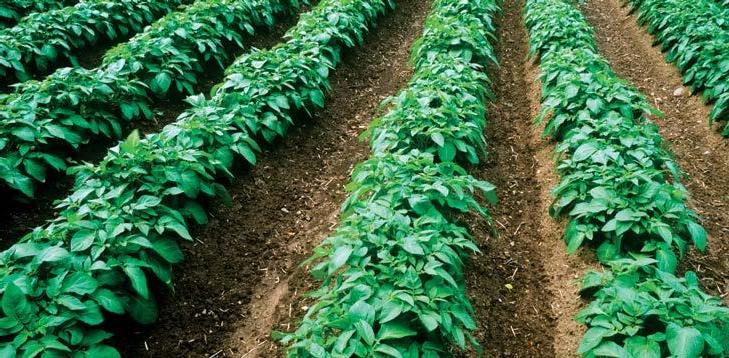
4 minute read
Fresh tomatoes every day
GROWING FOR
THE FUTURE
Words by Glenys Christian
A big range of different plants are grown in amongst Brad Harding's vegetable crops including globe artichokes
Every little bit of space is used on vegetable grower Brad Harding’s 2.36 hectare block. And through regenerative agriculture practices he plans that will be the case for many years to come.
Brad grew up in the Bay of Plenty and worked for horticultural companies there, as well as in Taranaki and Hawke’s Bay, but it was always the goal to work out how he could do it himself. He read extensively on regenerative agriculture and five years ago attended workshops run by Canadian author Jean-Martin Fortier, who has written about small scale market gardening, and Curtis Stone who champions urban farming. Then he and his wife Rachel Yeats put together a crowd-funding proposal, raising $10,000 to lease some land at Te Puna, north of Tauranga, from which they sold vegetables at local farmers’ markets then restaurants, before establishing an online store and vege box delivery operation. Two years ago they and their children, Juno (now 9), Griffin (7) and Fox (5), moved to McLaren Falls Road on the flanks of the Kaimai Ranges to where Six Toed Fox Organics is now based. There were plenty of reasons to enter into a long-term lease on the former kiwifruit block 320 metres above sea level. The relatively flat land was above the spray line, the soil hadn’t been turned over for 25 years, there was reliable bore water, there were cryptomeria shelterbelts, and sheds they could repurpose. They built a greenhouse and nursery and now grow many different salad mixes such as lettuce, baby spinach, rocket, sorrel and kale along with herbs like coriander, fennel and parsley. Large leafy greens include silverbeet, kale, spinach, celery and chard, and rooting vegetable crops beetroot, carrots, turnips, leeks, onions and radishes.
“It was a bit of a stab in the dark growing lots of different things, and there’s been a lot of figuring out of what’s the most profitable to do.” Rachel put together a farm management database where they can enter all the details for the different crops, along with customer reactions, helpful in reducing wastage. Customers now include Farro Fresh stores as well as Huckleberry Farms. They handle local vege box deliveries themselves, with a courier used for customers further away such as in Taupō. Extensive use of weed mat means they can harvest one crop then plant another. Around 100 tonnes of commercially produced compost is systematically applied every year, spread mainly on the soil surface. A flail mower is used to mulch the remains of harvested crops 10mm into the soil to get rid of tillage. A diversity of cover crops are grown, with surplus ground in summer being sown in a mix of pumpkins, sunflowers and buckwheat.
“We want a quick maturing crop which doesn’t smother others out or set seed too quickly.” They use a mix of fish meal and brown sugar, which once fermented for a minimum of two weeks, produces fish amino acid (FAA) which has no smell. That can then be added into their fertigation system which runs all year round, although it’s used more frequently in winter. Brown sugar is also used with plant material such as docks which are dug out of the ground and valued for the trace minerals they can provide which go back into the soil. The residual vinegar-like liquid is used to dissolve shells and bones to provide extra calcium, which is once again applied back on to the soil. Other useful plants are comfrey and Californian thistle, which is put through a wood chipper before brown sugar is added. Then osmotic pressure will release the sugars good for soil microbes once it is applied. Local fertiliser company Fertco soil tests once a year and supplies a custom blend if required, but often there’s little in the way of balance needed.
Pests are dealt with by the introduction of predator insects from Pukekohe firm Bioforce, and a biological pesticide, bacillus thuringiensis, deals with white cabbage moth. Any fungi problem, most often on spinach, is dealt with by Agrimm Technologies’ biofungicide Trichoderma.
EXTENSIVE USE OF WEED MAT MEANS THEY CAN HARVEST ONE CROP THEN PLANT ANOTHER
100 tonnes
of commercially produced compost is systematically applied every year
10mm
A flail mower is used to mulch the remains of harvested crops 10mm into the soil to get rid of tillage
A diversity of cover crops are grown, with surplus ground in summer being sown in a mix of pumpkins, sunflowers and buckwheat
Growing a diversity of crops also helps with a wetter area planted with fruit trees and natives where pumpkins are grown in every second row. “Healthy plants are much more resistant to attack.” Five staff are employed for most of the year, but that will rise to eight during busy periods. The small-scale market gardening Facebook page has over 1,000 members sharing their accumulated knowledge. Brad and Rachel began the process to become organically certified four years ago, which is prescriptive when it comes to inputs, while regenerative agriculture as well as reducing harm, seeks to improve the health of the land and waterways and the people who benefit from them. Open days are regularly held on the property and visitors are often amazed at how much produce can come from such a small area. “It’s all about building up the soil,” Brad says. “That’s key.”
Revitalise your soil
Using Revital compost alongside cover crops improves soil condition and optimises crop growth.
Elenka Nikoloff
REVITAL FERTILISERS 021 595 311 | elenka@revital.co.nz
www.revital.co.nz











